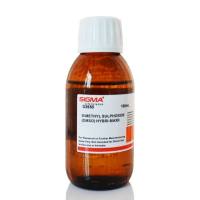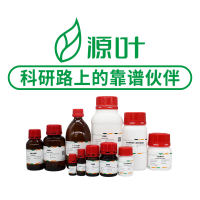Yeast Media, Solutions and Stocks
互联网
Yeast Media:
Medium using 6.7 g yeast nitrogen base without amino acids (Difco # 0919-15) can also be prepared using 1.7 g yeast nitrogen base without amino acids and ammonium sulfate (Difco #0335-15) and 5.0 g ammonium sulfate.
-
Note: Synthetic complete medium can be prepared by adding media supplements (see below).
AHC Medium (a selective medium for growing yeast strain AB1380, a host for YACs)
10 g casein hydrolysate acid
20 mg adenine sulfate (or 10 ml adenine sulfate stock solution, see supplements below)
1 liter dH2O
pH to 5.8 with approximately 50 � 12 N HCl
autoclave 30-45 minutes and cool to 65 degrees C, then add 50 ml sterile 40% glucose
-
6.7 g yeast nitrogen base (without amino acids) Difco# 0919-15
AHC plates
-
Add 20 g Bacto agar to AHC medium before autoclaving
SD Medium (a synthetic, minimal medium)
1 liter dH2O
autoclave for 30-45 minutes and cool to 65 degrees C, then add 50 ml of sterile 40% glucose
-
6.7 g yeast nitrogen base (without amino acids) Difco# 0919-15
SD plates
-
Add 20 g Bacto-agar before autoclaving
Sorbitol-Agar Medium (1 liter)
182 g sorbitol
6.7 g yeast nitrogen base (without amino acids) Difco# 0919-15
Uses eleven of the synthetic media supplements (see below): adenine, arginine, histidine, isoleucine, leucine, lysine, methionine, phenylalanine, threonine, tryptophan, and tyrosine.
Pipet the prescribed ml amount of stock solution in the synthetic media supplements list for 1 liter of media, except for adenine: use 5 ml adenine (instead of 10 ml).
Add 900 ml dH2O, dissolve the ingredients, and pH the solution to 5.8 with 1 N NaOH.
Adjust the volume to 1 liter with dH2O, add 20 g agar and autoclave 30-45 minutes.
After autoclaving, add 50 ml sterile 40% glucose. Mix well and cool to 50 degrees C before pouring the plates.
Note: Because the medium will be used with spheroplasts (which are extremely sensitive to lysis with detergents) pre-rinse all glassware at least 3 times before using.
-
(a 1 M sorbitol synthetic medium with a lower adenine concentration used to plate out transformed yeast cells)
Sorbitol-Agar Medium Top Agar
Note: Because the medium will be used with spheroplasts (which are extremely sensitive to lysis with detergents) pre-rinse all glassware at least 3 times before using.
-
Prepare Sorbitol-Agar medium with 25 g agar instead of 20 g. Autoclave 40 minutes/1L volume to sterilize.
Sporulation Medium Plates
-
Diploid strains will undergo several divisions on this medium and then sporulate after 3 -5 days incubation. Sporulation of auxotrophs is usually increased by adding the nutritional requirements (see synthetic media supplements, below) to the medium at 25% the normal levels.
<center> <table> <tbody> <tr> <td> 1% potassium acetate</td> <td> 10 g</td> </tr> <tr> <td> 0.1% yeast extract</td> <td> 1 g</td> </tr> <tr> <td> 0.05% glucose</td> <td> 0.5 g</td> </tr> <tr> <td> 2% agar</td> <td> 20 g</td> </tr> <tr> <td> distilled water</td> <td> 1000 ml</td> </tr> </tbody> </table> </center>
-
To induce diploid strains to sporulate after 18-24 hours without vegetative growth, use this medium without the yeast extract and glucose.
YPD Medium (an enriched, non-selective yeast growth medium)
- 10 g yeast extract
- 20 g Peptone
- 1 liter dH2O
- adjust pH to 5.8 with approx. 50 � 12 N HCl
-
autoclave 30-45 minutes and cool to 65 degrees C, then add 50 ml of sterile 40% glucose
YPD plates
-
Add 20 g Bacto agar before autoclaving
Synthetic Media Supplements
-
All stock solutions can be autoclaved for 15 minutes at 121�, and stored for extensive periods. Some stocks should be stored at room temperature (indicated below by a *) to prevent precipitation, while the others should be refrigerated. When using threonine and aspartic acid, add after autoclaving the media. Use the HCl salts of amino acids wherever applicable.
Solutions and stocks:
40 mM EDTA, 90 mM 2-Mercaptoethanol (2-ME)
<center> <table> <tbody> <tr> <td> 40 ml</td> <td> 0.5M EDTA, pH 8.0</td> </tr> <tr> <td> 3.8 ml</td> <td> 2-Mercaptoethanol (12M stock)</td> </tr> <tr> <td> 456.2 ml</td> <td> sterile ddH2O</td> </tr> <tr> <td> 500 ml</td> <td> Store at room temperature.</td> </tr> </tbody> </table> </center>
5X HPB (High Phosphate Buffer) (for 1 liter)
- 146.1 g NaCl
- 134.0 g Na2HPO4
- 9.3 g Na2EDTA
- pH to 7.0 with concentrated HCl
- Autoclave to sterilize
<center> <table> <tbody> <tr> <td> </td> <td> </td> <td> Final concentration</td> </tr> <tr> <td> 2M sorbitol</td> <td> 50 ml</td> <td> 1.0 M</td> </tr> <tr> <td> 1M sodium citrate</td> <td> 10 ml</td> <td> 0.1 M</td> </tr> <tr> <td> 0.25M EDTA, pH7.0</td> <td> 24 ml</td> <td> 60 mM</td> </tr> <tr> <td> sterile ddH2O</td> <td> 16 ml</td> </tr> <tr> <td> </td> <td> ------</td> </tr> <tr> <td> </td> <td> 100 ml</td> </tr> </tbody> </table> </center>
-
Filter sterilize and store at room temperature.
SCE/ DTT/ Lyticase (for 40 ml, prepare fresh each time):
- 40 ml SCE
- 300 � 2 M DTT
- 5600 units Lyticase
SCE/2-ME/Lyticase (2 ml)
- 2 ml SCE
- 16 � 2-ME
- 0.2 mg Lyticase
Mbo I Buffer
- 100 mM NaCl
- 10 mM Tris-HCl, pH 7.4
- 10 mM MgCl2
- 1 mM Dithiothreitol
-
100 �/ml bovine serum albumin
Miniprep Lysis Buffer
<center> <table> <tbody> <tr> <td> </td> <td> </td> <td> Final concentration</td> </tr> <tr> <td> 1M Tris-HCl, pH 7.4</td> <td> 5 ml</td> <td> 50 mM</td> </tr> <tr> <td> 0.5M EDTA, pH8.0</td> <td> 5 ml</td> <td> 25 mM</td> </tr> <tr> <td> 5M NaCl</td> <td> 10 ml</td> <td> 500 mM</td> </tr> <tr> <td> 1M MgCl2</td> <td> 300 �</td> <td> 3 mM</td> </tr> <tr> <td> 12M 2-Mercaptoethanol</td> <td> 25 �</td> <td> 3 mM</td> </tr> <tr> <td> Nonidet P-40</td> <td> 100 �</td> <td> 0.1 %</td> </tr> <tr> <td> 10% SDS</td> <td> 10 ml</td> <td> 1.0 %</td> </tr> </tbody> </table> </center>
Filter sterilize and store at room temperature.
-
Bring volume to 100 ml with sterile ddH2O.
Large Scale Prep Lysis Buffer
<center> <table> <tbody> <tr> <td> 0.5 M Tris-HCl, pH 9.0</td> <td> 2.5 ml 2 M Tris-HCl stock</td> </tr> <tr> <td> 3% sarkosyl 3.3 ml</td> <td> 10% sarkosyl stock</td> </tr> <tr> <td> 0.2 M EDTA</td> <td> 4 ml 0.5 M EDTA stock</td> </tr> </tbody> </table> </center>
-
Adjust volume to 10 ml with sterile ddH2O.
1 mM Tris/1% Sarkosyl (for 1 liter)
- 1 ml 1M Tris-HCl, pH 7.5
- 100 ml 10% sarkosyl
-
899 ml dH2O
200 mM Tris/2X SSC (1liter)
- 200 ml 1M Tris-HCl, pH 7.5
- 100 ml 20 X SSC
- 700 ml dH20
Yeast prehyb/hyb solution (for 10 ml)
- 7 ml sterile dH2O
- 2 ml 5X HPB
- 1 ml 10% sarkosyl
Yeast Lysis Buffer
- 50 mM EDTA
- 1% sarkosyl
- 10 mM Tris-HCl, pH 8.0
- 1 mg/ml proteinase K
References:
Sherman, F., Fink, G. R., and J. B. Hicks. (1986). Methods in Yeast Genetics. Cold Spring Harbor Laboratory Press, Cold Spring Harbor, NY.
Brownstein, B. H., Silverman, G.A., Little, R.D., Burke, D. T., Korsmeyer, S. J., Schlessinger, D., and M. V. Olson, (1989) "Isolation of single-copy human genes from a library of Yeast Artificial Chromosome clones". Science 244: 1348-1351.







